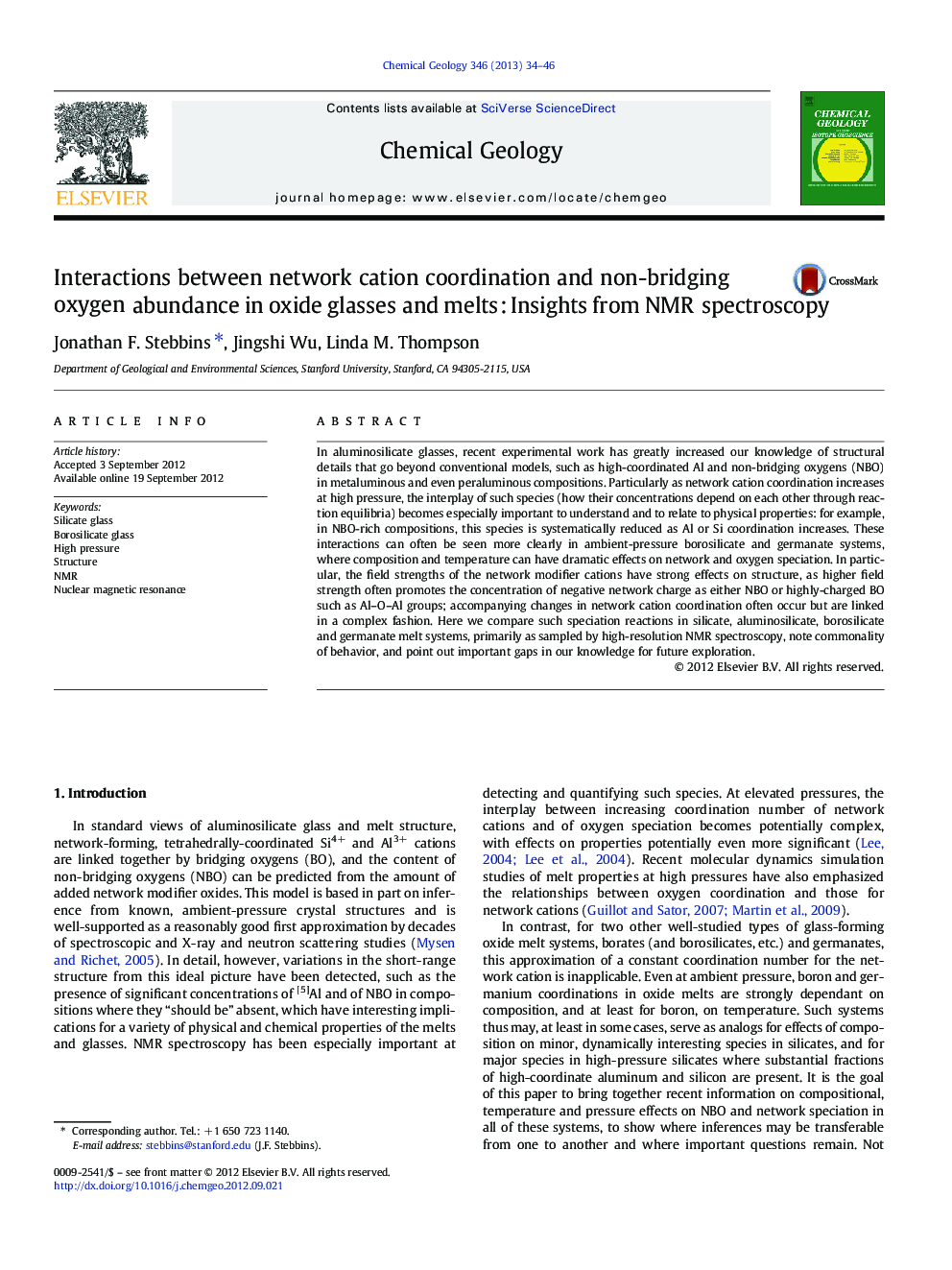| Article ID | Journal | Published Year | Pages | File Type |
|---|---|---|---|---|
| 4699009 | Chemical Geology | 2013 | 13 Pages |
In aluminosilicate glasses, recent experimental work has greatly increased our knowledge of structural details that go beyond conventional models, such as high-coordinated Al and non-bridging oxygens (NBO) in metaluminous and even peraluminous compositions. Particularly as network cation coordination increases at high pressure, the interplay of such species (how their concentrations depend on each other through reaction equilibria) becomes especially important to understand and to relate to physical properties: for example, in NBO-rich compositions, this species is systematically reduced as Al or Si coordination increases. These interactions can often be seen more clearly in ambient-pressure borosilicate and germanate systems, where composition and temperature can have dramatic effects on network and oxygen speciation. In particular, the field strengths of the network modifier cations have strong effects on structure, as higher field strength often promotes the concentration of negative network charge as either NBO or highly-charged BO such as Al–O–Al groups; accompanying changes in network cation coordination often occur but are linked in a complex fashion. Here we compare such speciation reactions in silicate, aluminosilicate, borosilicate and germanate melt systems, primarily as sampled by high-resolution NMR spectroscopy, note commonality of behavior, and point out important gaps in our knowledge for future exploration.
► Non-bridging oxygens interact in complex ways with network cation coordination ► Changes with pressure, temperature and composition reveals these interactions ► Structural inferences can be transferred among silicate, borate, germanate systems ► Modifier cation field strength has major and systematic effects on structure ► A simple notation allows correct mass and charge balancing of speciation reactions
